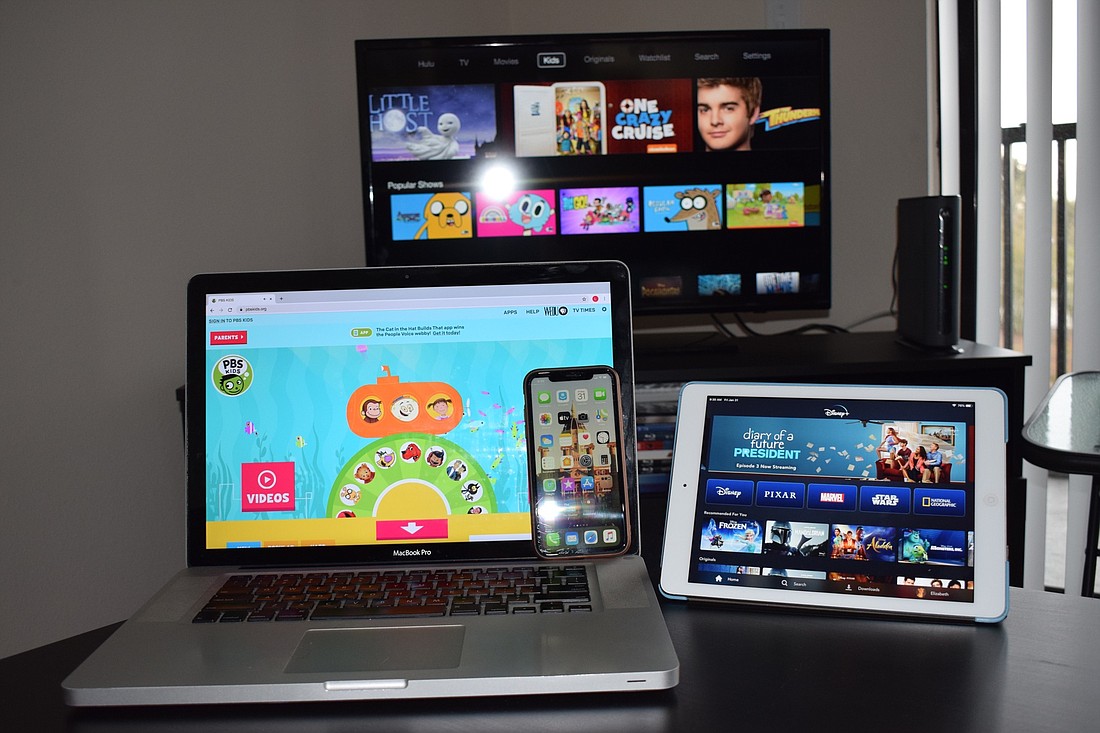- April 19, 2024
-
-
Loading

Loading

Technology is becoming more prevalent in today’s society.
Students use it in school, kids are watching more movies and videos and playing video games, and social media has increasingly become the way to communicate with one another.
But what impact does hours of screen time have on children?
Spending hours staring at a screen can cause negative impacts on a child’s physical, mental and social emotional health.
The American Academy of Pediatrics recommends children younger than 18 months to 2 years old avoid digital media use, and for children 2 to 5 years old, screen time should be limited to one hour per day.
“Technology is not a bad thing if used appropriately,” said Kerry Gaylord, the director of child development for the Early Learning Coalition of Manatee County.
Early Learning Coalition provides and coordinates the services of school readiness programs to help children develop needed skills to achieve educational success, support parents as their child’s teacher and improve the quality of services in the community.
Dr. Jose Tavarez with First Physicians Group in Lakewood Ranch said one problem with too much screen time is the effect on brain development.
“The development the brain is supposed to go through is different; it’s slower,” Tavarez said. “We do know [that for] some kids, when they have excessive screen time, speech could be delayed, and social skills could be delayed.”
Pam Parmenter, the director of early learning for the coalition, said a child’s development benefits from the ability to manipulate real items, such as blocks, that will help develop a sense of spatial relationship, which will in turn assist when trying to understand math, science and engineering.
Technology usage also impedes children’s ability to develop social and emotional skills necessary to develop relationships with others.
“You’re not really interacting with people when doing it virtually versus learning the nuances of social and emotional cues and developments,” Gaylord said.
Kids spending less time outdoors and more time inside using digital devices also causes issues for a child’s physical health.
“The kids, instead of playing outside, jumping around, they’re sitting in front of a screen,” Tavarez said. “Passive screen time is really dangerous.”
Dr. Ashley Masuga, a Lakewood Ranch optometric physician, said children spending more time inside on devices rather than outside increases the chances of developing myopia, commonly known as nearsightedness, the inability to see far away.
Masuga said technology usage causes dryness of the eye because people “probably blink 50% less” when staring at screens. Other impacts include eye irritation and eye strain.
“I think it’s really important to limit use,” Masuga said. “If you tell children it’s potentially harmful to their eyes, I think children will listen to you, and you can create minimal time.”
The blue light coming from screens can affect children’s sleep patterns as well. Looking at screens within two hours before going to sleep causes children to have difficulty falling asleep and staying asleep, Tavarez said. A lack of sleep can then affect a child while at school because the child might not be able to stay awake during class or might not be as focused.
He suggests setting up screen-free times and making screen-free zones in the home, such as in the child’s bedroom and the kitchen and dining area. Tavarez stresses that meal times should be technology-free to promote family interactions.
Masuga said eye doctors recommend taking several visual breaks when using technology.
“We recommend for every 20 minutes on a device, take 20 seconds off the device looking 20 feet away,” she said. “It allows the eye to actually have breaks, and that can really help in reducing some of [the impacts] as well.”
If parents want to introduce digital media to their youngsters, Gaylord, Parmenter and Tavarez suggest ensuring parents are involved in the media usage.
“If I were to sit down, and ideally, you’d want to sit down with an educational-type program or tool, with a child shoulder-to-shoulder, I’m now interacting with them,” Gaylord said. “That in itself is what lends to teaching them those social skills and emotional skills in helping to scaffold that type of development and bonding.”
Tavarez said parents have to be what he calls “media mentors” to their children by sitting with them and explaining what they’re watching.
Stopping the video to talk about the concepts being introduced allows for an opportunity to deepen a child’s thought process, analysis, creative thinking and problem solving, Parmenter said.
Sometimes parents use technology as a way to keep children from being bored or to distract them, so parents can complete tasks around the home, such as washing dishes, making dinner or doing laundry, but Gaylord and Parmenter said common household chores can also be used as a time to learn, have fun and stay away from technology.
“Children don’t become problem solvers by leaving them alone,” Parmenter said.